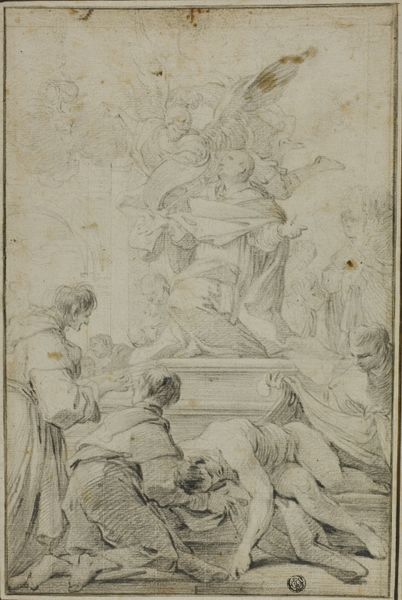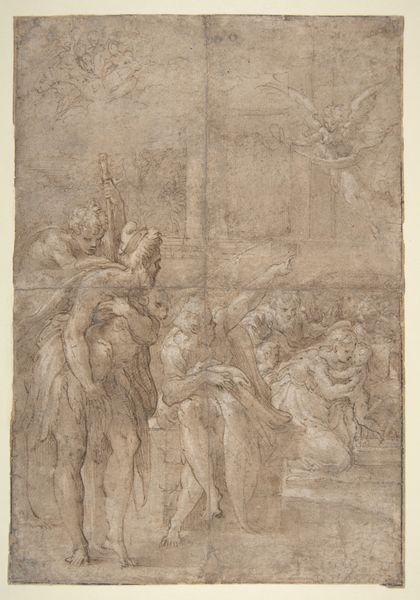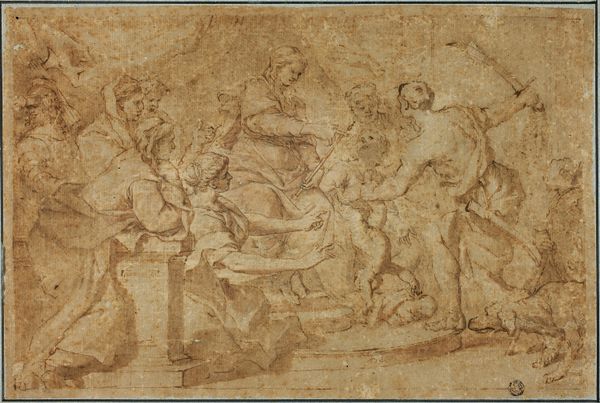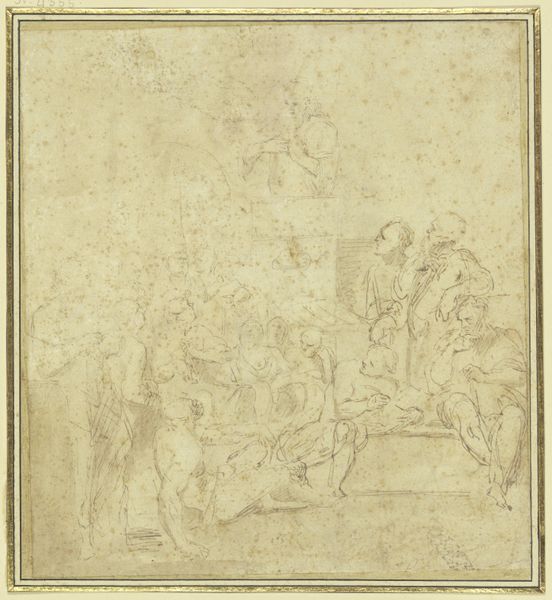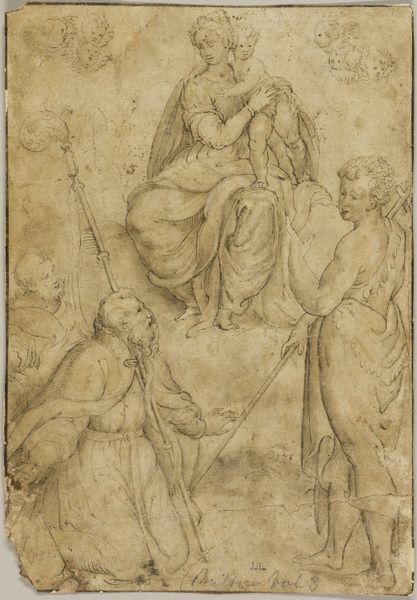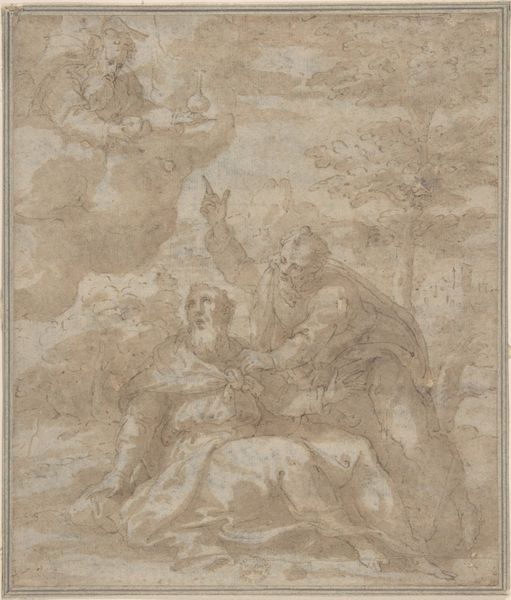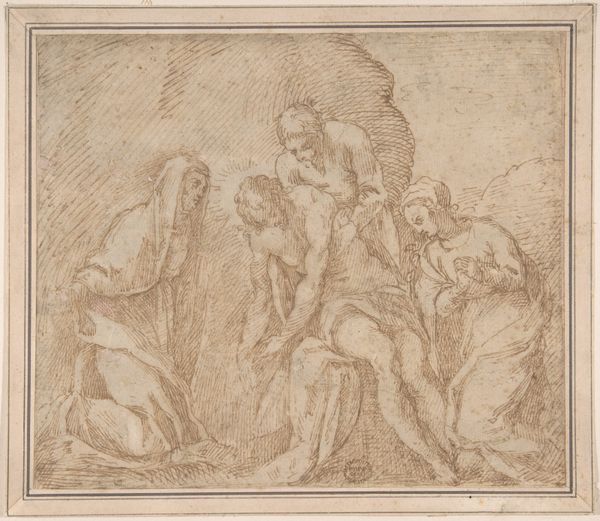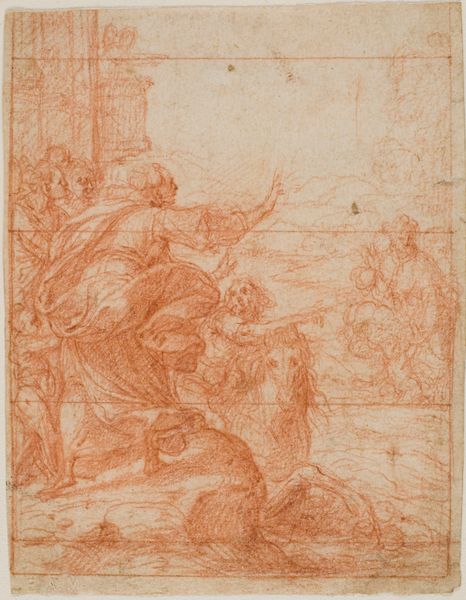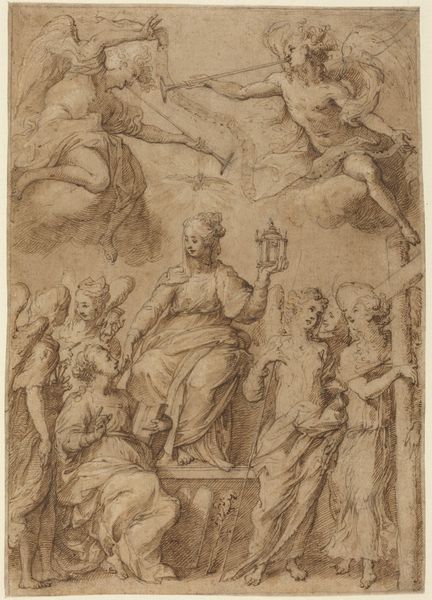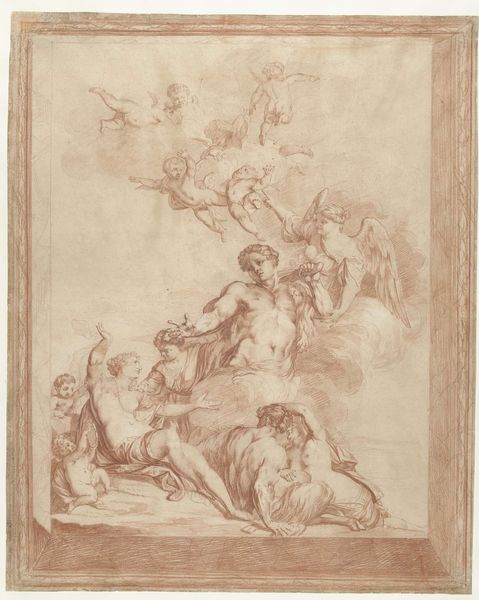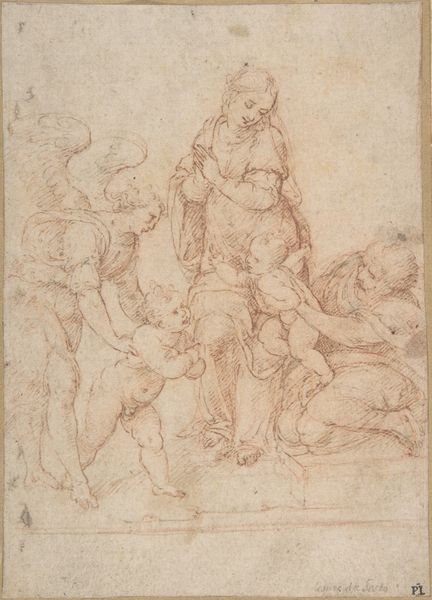
drawing
#
drawing
#
allegory
#
charcoal drawing
#
mannerism
#
figuration
#
11_renaissance
#
history-painting
#
italian-renaissance
Dimensions: Overall: 28.9 x 20.9 cm (11 3/8 x 8 1/4 in.) support: 42.5 x 34.5 cm (16 3/4 x 13 9/16 in.)
Copyright: National Gallery of Art: CC0 1.0
Curator: The energy in this drawing is captivating! There’s an urgency communicated by the figures, despite the sepia tones giving it an antique, mellow cast. Editor: Indeed. What you are observing is “The Sacrifice of a Goat to Jupiter,” a work rendered in charcoal around 1527-1528 by Giulio Romano, an Italian painter and architect active during the High Renaissance and early Mannerism. The Met houses this very piece. Curator: Sacrifice, right. Immediately, I’m drawn to the almost theatrical posing. The woman on the left with her intense gaze, the goat itself as an emblem… Editor: Look at how the figure, likely a priestess, holds the garlanded goat. It suggests an understanding of the sacrificial act not just as slaughter, but as a consecrated giving. Throughout time, animals held unique symbolism; the goat here perhaps linking to virility, sustenance, or even a scapegoat figure for cleansing the community. Curator: But consider, too, the artifice of Mannerism at the time, its fascination with learned conceits. It invites an almost intellectual decoding, rather than purely emotional engagement. Roman artists reveled in elaborate scenes like this. Is there commentary on rituals or a specific sociopolitical message for its original audience? Editor: Quite possibly, yes. Sacrifice held immense public importance and power, inextricably entwined with the governing system. To depict this so consciously—almost stagily—implies a specific statement the artist might have wanted to make to an audience steeped in that culture of ritual and symbol. See the elevated goddess form at the upper center of the drawing. She acts almost like an approving audience member. Curator: The artist's awareness of historical precedent shines here too, in their stylistic choice. The composition speaks of antiquity revived—of classical drama, filtered through a later lens. I think about the patrons. Who was intended to see this? What status might this theme invoke, by choosing this specific narrative, or its emphasis? Editor: An interesting question indeed; all of which prompts new understanding, and encourages continued discourse! Curator: Precisely. The power of the symbolic, ever unfurling...
Comments
No comments
Be the first to comment and join the conversation on the ultimate creative platform.

